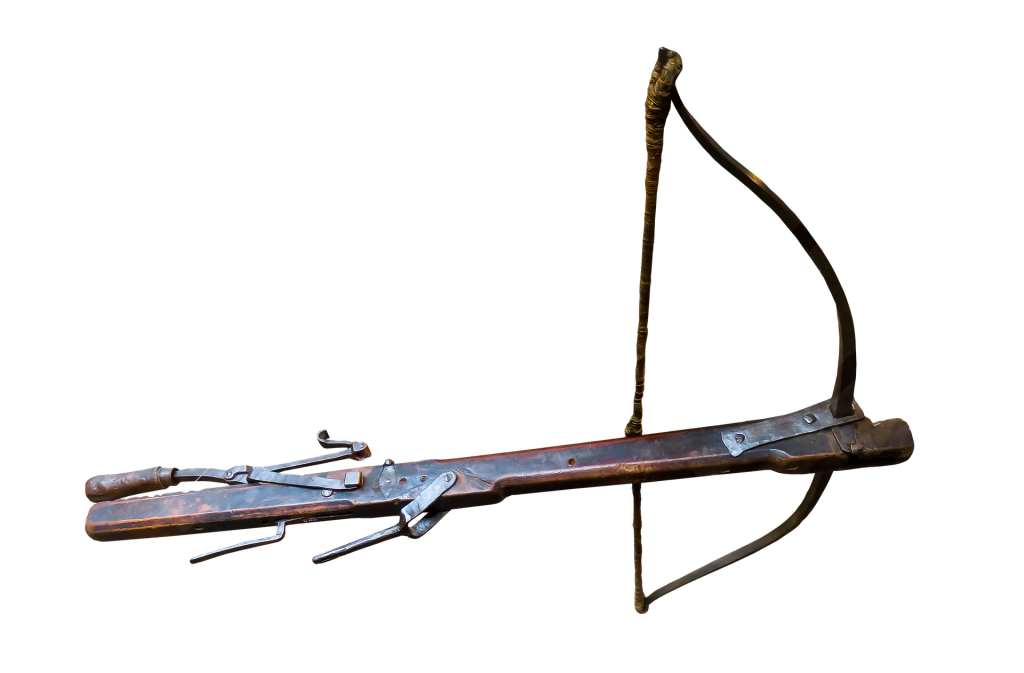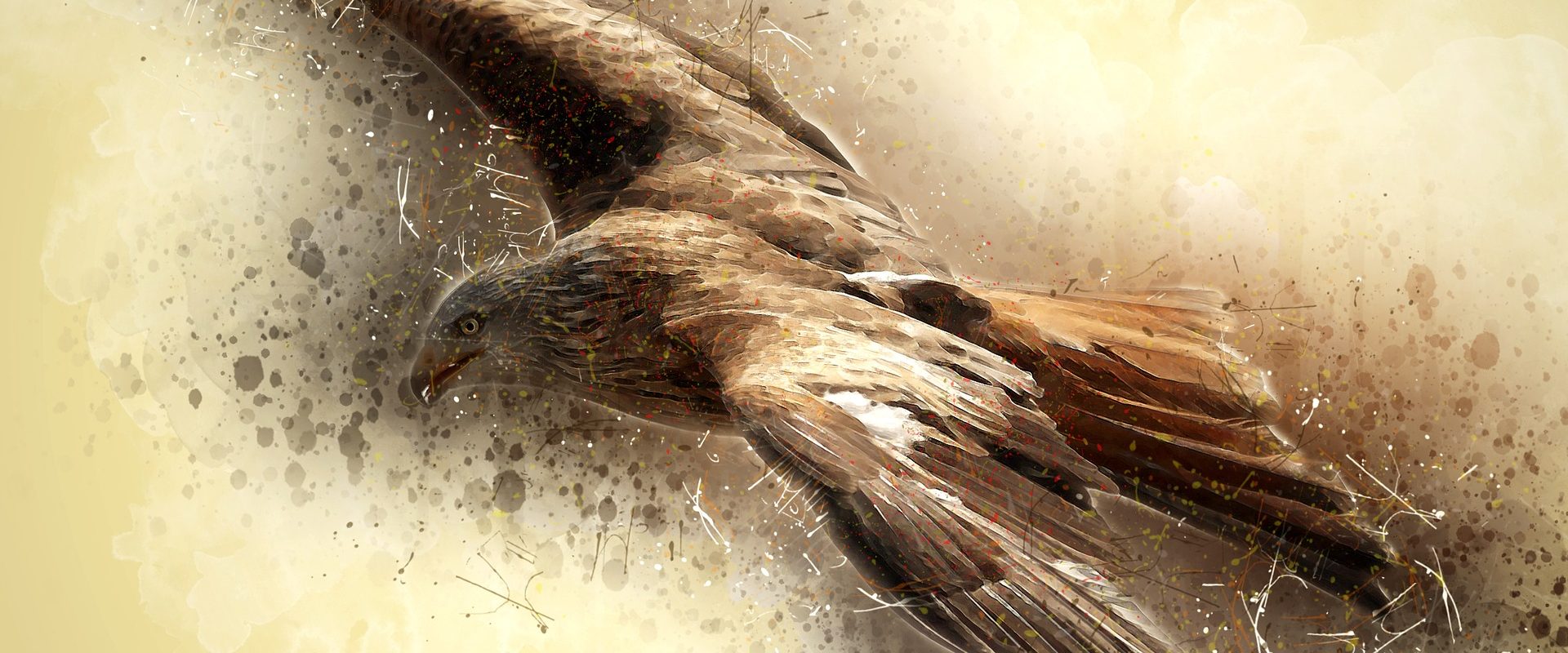“What in the living light is wrong with your crossbow?”
So says Able Hearthwen the first time he lays eyes on Tanin’s weapon of choice in “Chronicles of the Roc Rider”. But where did this weapon come from, how are they used on battlefields, and what makes a rider crossbow so special? Read on for a bit of history on rocs in combat and how these unusual weapons came to be:
Fighting on Roc Back, the Early Days
Early roc combat consisted mostly of using the rocs themselves as living weapons. Diving at ground targets with talons and, once on the ground, overpowering fighters with the roc’s beak while the rider defended with a shield. Standard weapons of the time like axes and maces/clubs simply didn’t have the reach to allow the rider to be effective on the offense.
Riders quickly learned that the effectiveness of their attacks could be stretched by use of a spear. The added reach allowed the rider to directly contribute to battle while still astride their mount. Opposing forces with riders on both sides came to realize that the better one could wield a spear in the air, the more likely you could knock an opposing rider from the sky and gain superiority over the battlefield.
For many years, spears continued to get longer and melee combat was the norm for roc riders.
The Rise of the Javelin
Spear throwing from roc back was long considered a novelty, and unsuitable for battlefield use. The unpredictable and buffeting air currents were simply too likely to catch a spear shaft and throw it off course to make the practice useful. A handful of rider tribes were known to practice aerial target spear throwing as a competitive sport, but the practice took many years to move beyond this.
Not until the development of the javelin as a battlefield weapon did ranged combat work its way into the roc rider tradition. As thrown weapons were too unpredictable high in the air, the javelin was first used as an added talon during a roc’s dive against ground targets.
Eventually, to keep their mounts from danger and increase the amount of time they could do damage from the air, riders began to adopt a strafing strategy. Gliding along the battlefield just out of spear reach, a skilled rider could take out numerous enemy combatants with javelin throws and benefit from a shorter turnaround time.
One particularly war-loving tribe famously used this strategy against a foe that favored shields. A multitude of strafing rocs would force the opposing army to turn their shields skyward before ground troops would use their own javelin and spear strikes to take advantage.
Bows, and the Decline of Rocs on the Front Line
Bow and arrow took quite some time to find its way onto the battlefield, but once it did the role of roc riders in combat was never quite the same. When facing a single archer a roc could usually dodge effectively enough not to be hurt. Against even a small group of them, though, a roc presented far too large of a target to stay out of danger.
Around this time, roc populations began to decline for a number of reasons. This included the rise of several cult-like traditions which believed roc body parts contained medicinal properties. As the number of available riders dropped, commanders could no longer afford to be cavalier in their deployment of rocs.
Hence, when more and more armies began using archers, roc riders were relegated to scouting and support roles. Riders still performed the occasional midnight strafing run or surprise attack on an enemy camp, but gone were the days when riders were a common sight at the vanguard of a marching army.
Some armies made token attempts to use archers on roc back to supplement an attacking force, but bows proved incredibly difficult to wield from the harness. Even for those who could master shooting from roc back, riders generally didn’t have the numbers to create an effective cloud of arrows in larger engagements, and rarely had the needed accuracy from high above to pinpoint targets.
The Horse Rises to Prominence
 Thundering onto battlefields just a few short years after bows and arrows were mounted cavalry. Horses had long been seen as too gentle and valuable to waste in combat, but all of that changed when a single daring commander fielded the first army of ground mounted warriors. Soon, kingdoms everywhere were making rich men out of anyone who could breed enough of the animals to mount their armies.
Thundering onto battlefields just a few short years after bows and arrows were mounted cavalry. Horses had long been seen as too gentle and valuable to waste in combat, but all of that changed when a single daring commander fielded the first army of ground mounted warriors. Soon, kingdoms everywhere were making rich men out of anyone who could breed enough of the animals to mount their armies.
Plentiful where rocs were not, cheaper to feed, and far easier to both train and conceal, it seemed to many that horses stood to replace rocs as the mount of choice in war.
What cavalry commanders often failed to account for was the horses’ innate fear of rocs. As a natural predator of the horse, rocs had a distinct advantage against cavalry. For a time, roc riders were once again seen flying the in the vanguards of armies, diving at lines of cavalry to shatter their organized charges. Only those commanders who learned to field archers and cavalry in support of one another could count on being consistently effective against an army with rocs at the front.
Eventually, the armies of the world adapted, and tactics to limit the roc riders’ effectiveness against cavalry became commonplace. Riders once again found themselves providing scouting and support in the military, but many commanders also began using them for surgical strikes and tactical support. A wise commander could use a group of rocs to knock out an enemy’s seige equipment, or wait until opposing archers were distracted and then send in riders to disrupt enemy troop movements.
Crossbows and Riders as Ranged Support
 As cavalry became more commonplace, and roc riders less effective against them, the armaments of horse-mounted warriors grew more sophisticated. Eventually, plate armor became the norm among cavalry, its thick metal sheets making a cavalry charge all the more difficult to break.
As cavalry became more commonplace, and roc riders less effective against them, the armaments of horse-mounted warriors grew more sophisticated. Eventually, plate armor became the norm among cavalry, its thick metal sheets making a cavalry charge all the more difficult to break.
New weapons and tactics were developed to try and counter the growing threat of enemy cavalry. Foremost among these was the crossbow, developed to penetrate the thick armor of cavalry, and with its adoption, a new era in roc rider warfare was born.
While traditional archery had always been unwieldy and presented multiple difficulties from roc back, these new mechanical weapons proved easy to fire from the air. Their streamlined bolts could cut through much of the winds that would drag away larger projectiles, making them more useful from high in the air, and far more accurate than arrow or javelin when fired lower to the ground.
Only one problem kept roc riders from widely adopting the crossbow at first. The weapons had to be cranked or painstakingly pulled back by hand in between each bolt. A difficult task in the air, giving roc riders an incredibly slow rate of fire at best, and a single shot that was easy to waste at worst.
Some riders tried to compensate for this by carrying several loaded crossbows, but the unwieldy nature of this made it an unpopular choice.
Finally, fed up with being unable to support their brothers and sisters on the ground, a group of roc riders came together, hired a group of artisans, and spent the better part of a decade developing a new type of crossbow. Their goal, to develop a weapon that would reload on its own, allowing the roc rider to fire several shots before needing to stop and load more projectiles. Numerous iterations of the weapon proved marginally successful until finally, they had a design that consistently worked.
While the new weapon sacrificed penetrating power in exchange for the convenience of reloading automatically, this was a trade riders were more than willing to make. Suddenly, roc riders found themselves providing even more ranged and tactical support from high above battlefields. With the new crossbows small enough to wield one in each hand, a small group of roc riders could provide a devastating cloud of bolt fire from outside of arrow range before moving in for a surgical attack.
As the weapon became more widespread and riders were able to experiment, they quickly learned that diving at a target before firing provided the extra power needed in the event that penetrating a particular target’s armor was necessary.
Into the Modern Day
While rocs and their riders have become scarce, technological development has plateaued for the last several centuries, and so the design and function of rider crossbows has remained largely unchanged. While they have become as rare on battlefields as the roc riders themselves, many weaponsmiths still maintain the secrets to their construction.
The intricate, yet deceptively simple, gear design and elegant shape of rider crossbows make their construction something of an art among weaponsmiths. Many masters use the construction of a rider crossbow as the final test for an apprentice, and so a number of the weapons can still be stumbled upon from time to time. Quite the find, for those who know what they’re looking at.


